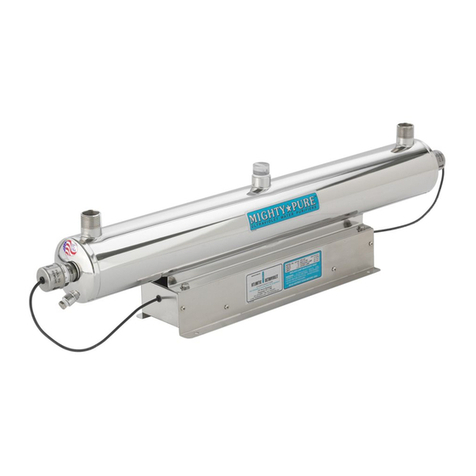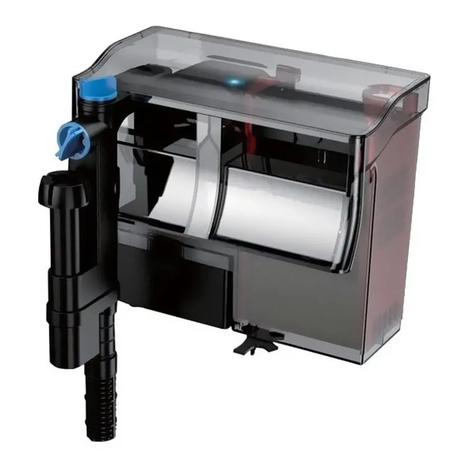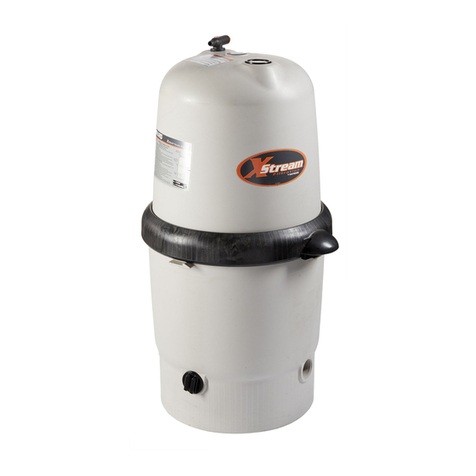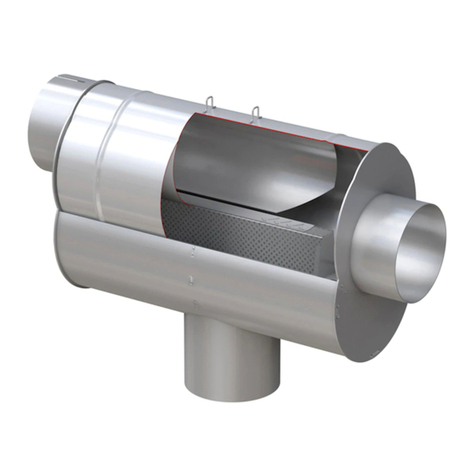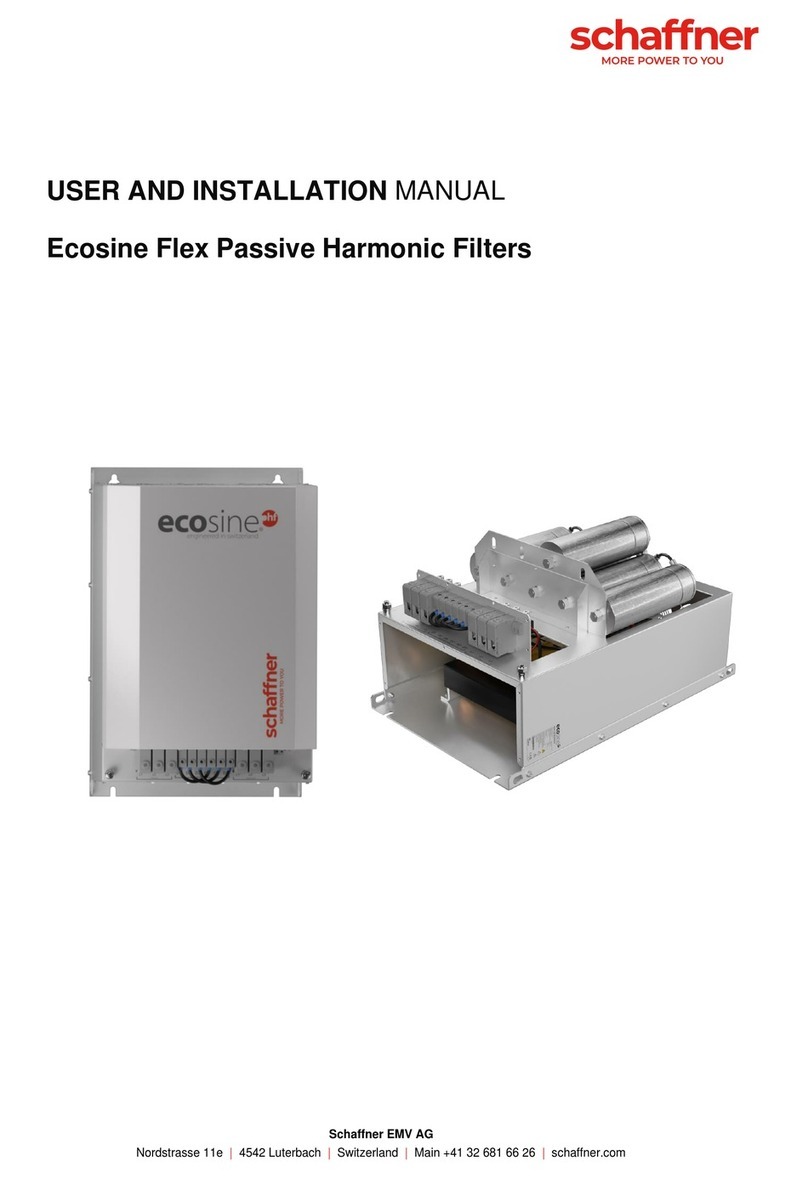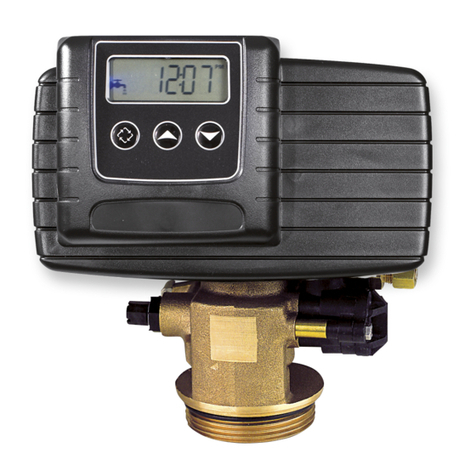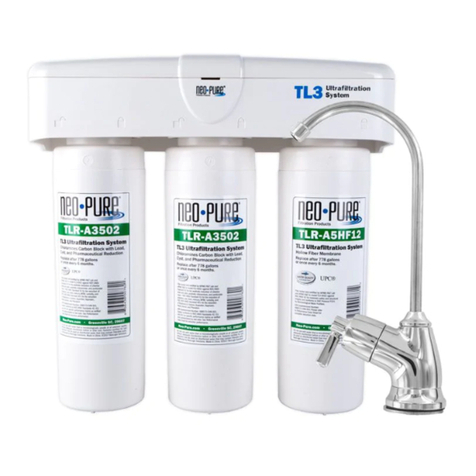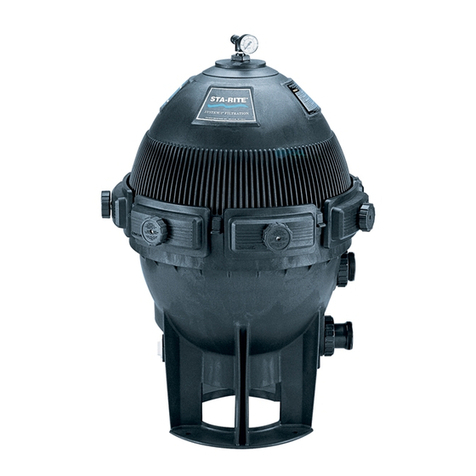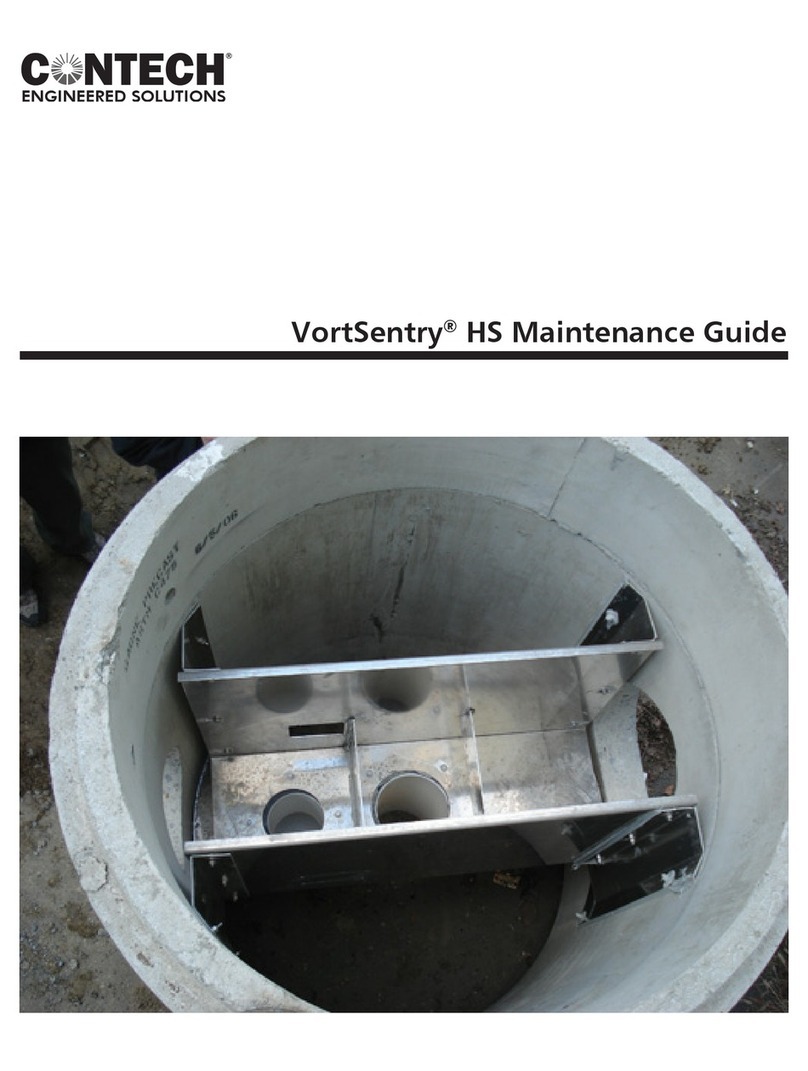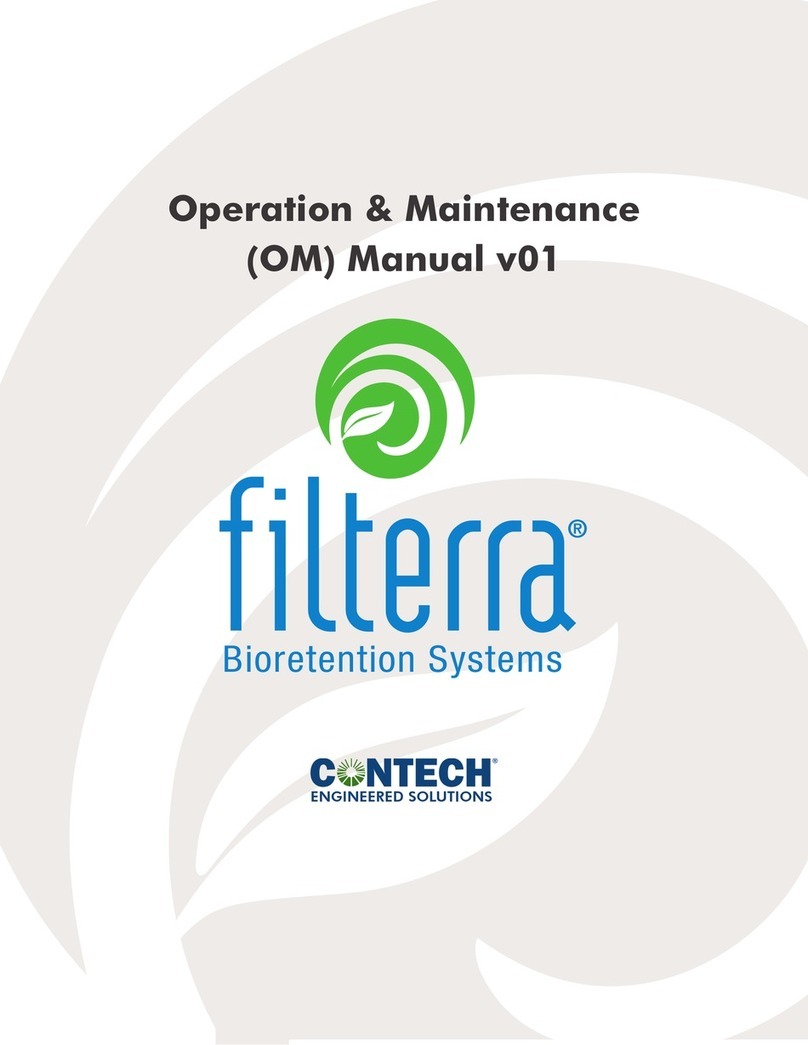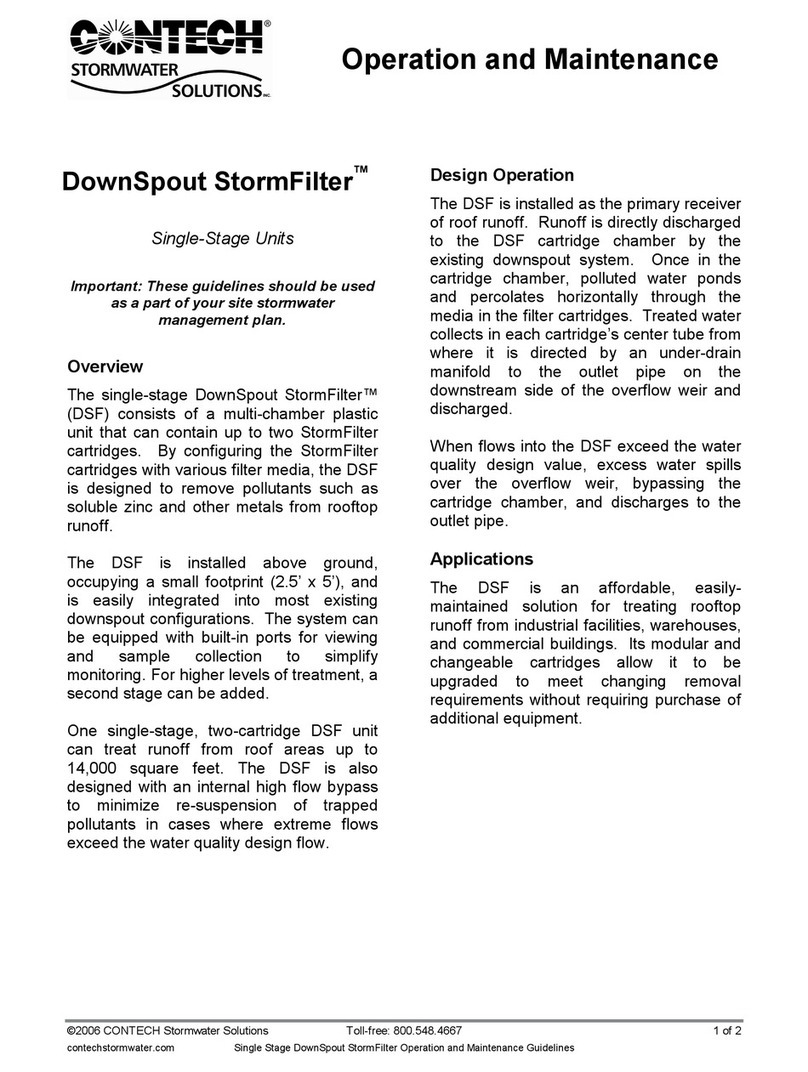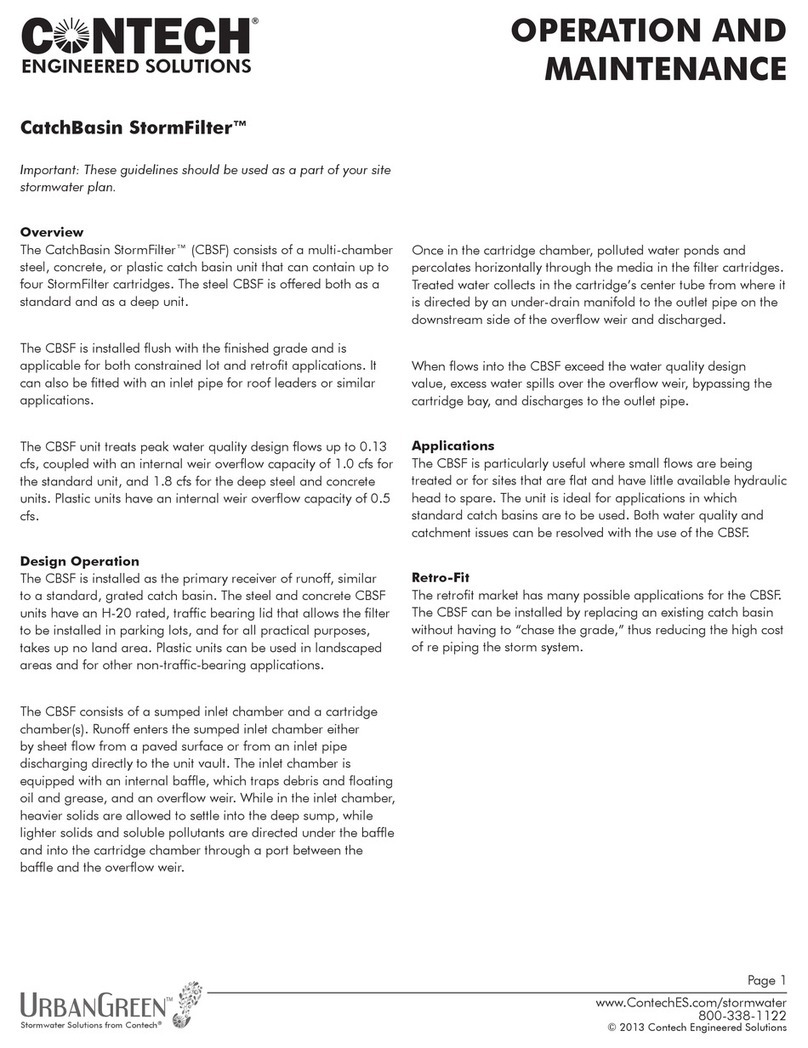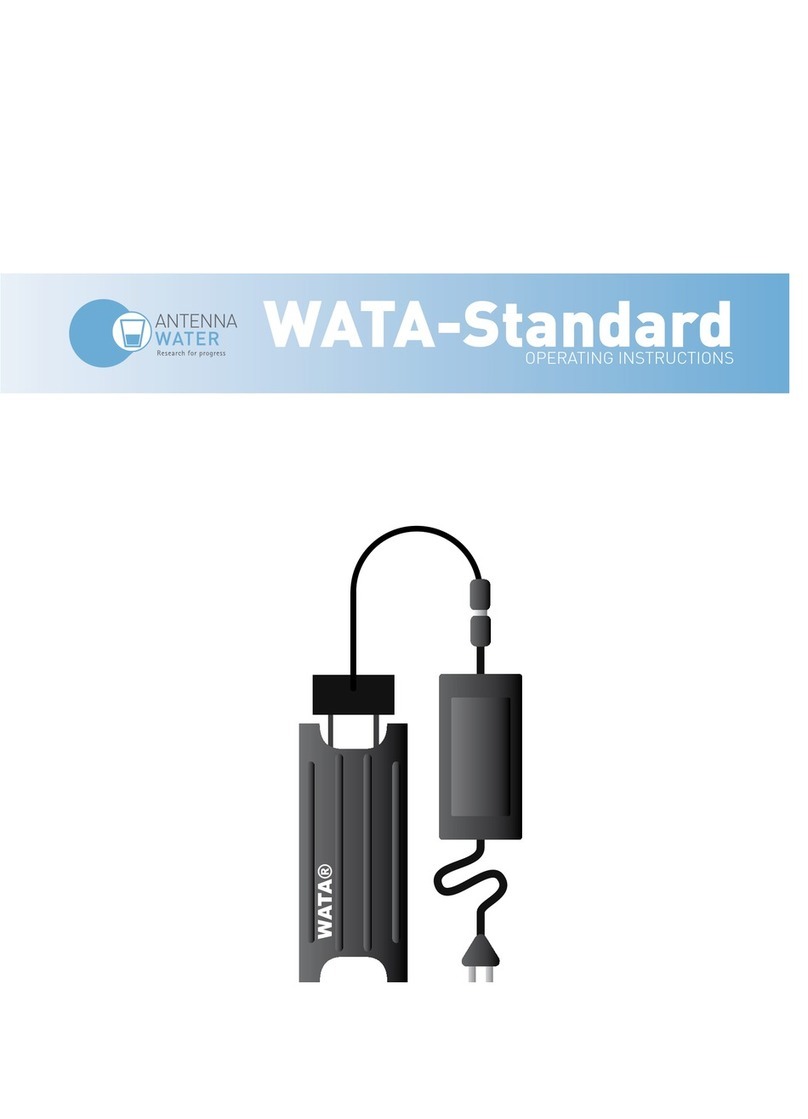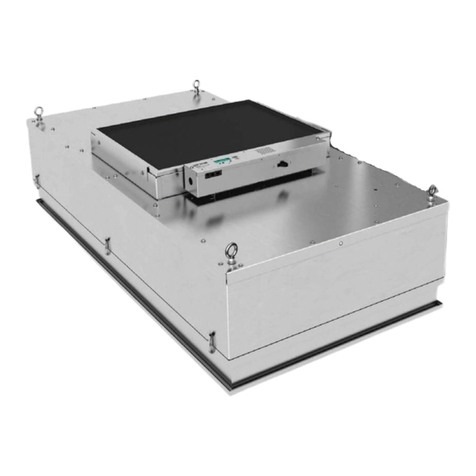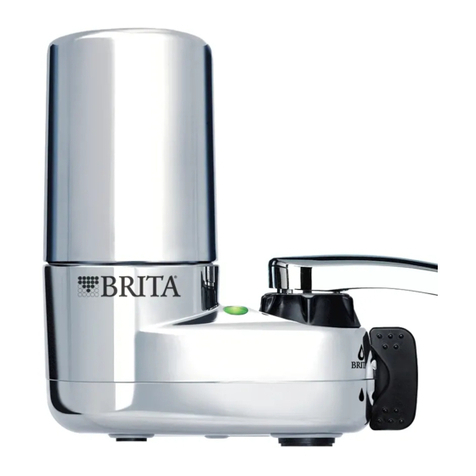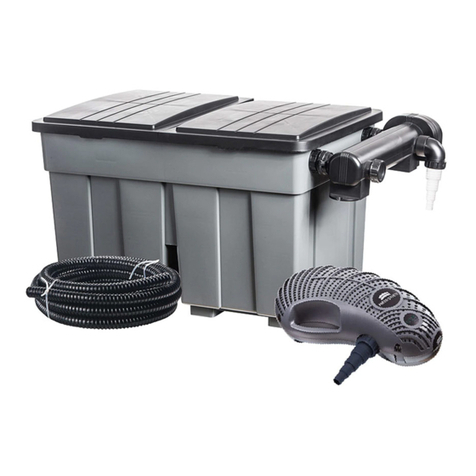
Jellysh® Filter Owner’s Manual 9
yStanding water outside the backwash pool is not
anticipated and may indicate a backwater condition
caused by high water elevation in the receiving
water body, or possibly a blockage in downstream
infrastructure.
yAny appreciable sediment (≥1/16”) accumulated on the
deck surface should be removed.
5.2 Wet weather inspections
yObserve the rate and movement of water in the unit.
Note the depth of water above deck elevation within the
MAW or inlet bay.
yLess than 6 inches, ow should be exiting the cartridge
lids of each of the draindown cartridges (i.e. cartridges
located outside the backwash pool).
yGreater than 6 inches, ow should be exiting the
cartridge lids of each of the draindown cartridges and
each of the hi-o cartridges (i.e. cartridges located
inside the backwash pool), and water should be
overowing the backwash pool weir.
y18 inches or greater and relatively little ow is exiting
the cartridge lids and outlet pipe, this condition
indicates that the lter cartridges need to be rinsed.
6.0 Maintenance Requirements
Required maintenance for the Jellysh Filter is based upon results
of the most recent inspection, historical maintenance records, or
the site specic water quality management plan; whichever is more
frequent. In general, maintenance requires some combination of the
following:
1. Sediment removal for depths reaching 12 inches or greater, or
within 3 years of the most recent sediment cleaning, whichever
occurs sooner.
2. Floatable trash, debris, and oil removal.
3. Deck cleaned and free from sediment.
4. Filter cartridges rinsed and re-installed as required by the most
recent inspection results, or within 12 months of the most
recent lter rinsing, whichever occurs sooner.
5. Replace tentacles if rinsing does not restore adequate hydraulic
capacity, remove accumulated sediment, or if damaged or
missing. It is recommended that tentacles should remain in
service no longer than 5 years before replacement.
6. Damaged or missing cartridge deck components must be
repaired or replaced as indicated by results of the most recent
inspection.
7. The unit must be cleaned out and lter cartridges inspected
immediately after an upstream oil, fuel, or chemical spill.
Filter cartridge tentacles should be replaced if damaged or
compromised by the spill.
7.0 Maintenance Procedure
The following procedures are recommended when maintaining the
Jellysh Filter:
1. Provide trafc control measures as necessary.
2. Open all covers and hatches. Use ventilation equipment as
required, according to conned space entry procedures.
Caution: Dropping objects onto the cartridge deck may
cause damage.
3. Perform Inspection Procedure prior to maintenance activity.
4. To access the cartridge deck for lter cartridge service, descend
into the structure and step directly onto the deck. Caution: Do
not step onto the maintenance access wall (MAW) or backwash
pool weir, as damage may result. Note that the cartridge deck
may be slippery.
5. Maximum weight of maintenance crew and equipment on the
cartridge deck not to exceed 450 lbs.
7.1 Filter Cartridge Removal
1. Remove a cartridge lid.
2. Remove cartridges from the deck using the lifting loops in the
cartridge head plate. Rope or a lifting device (available from
Contech) should be used. Caution: Should a snag occur, do
not force the cartridge upward as damage to the tentacles
may result. Wet cartridges typically weigh between 100 and
125 lbs.
3. Replace and secure the cartridge lid on the exposed empty
receptacle as a safety precaution. Contech does not recommend
exposing more than one empty cartridge receptacle at a time.
7.2 Filter Cartridge Rinsing
1. Remove all 11 tentacles from the cartridge head plate. Take
care not to lose or damage the O-ring seal as well as the plastic
threaded nut and connector.
2. Position tentacles in a container (or over the MAW), with the
threaded connector (open end) facing down, so rinse water is
ushed through the membrane and captured in the container.
3. Using the Jellysh rinse tool (available from Contech) or a
low-pressure garden hose sprayer, direct water spray onto the
tentacle membrane, sweeping from top to bottom along the
length of the tentacle. Rinse until all sediment is removed from
the membrane. Caution: Do not use a high pressure sprayer
or focused stream of water on the membrane. Excessive
water pressure may damage the membrane.
Cartridge Removal & Lifting Device
